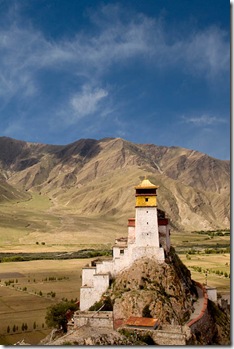Pala Manor is ten minutes driving from Gyangtse. As the best-preserved manor in Tibet, Pala will show you the lifestyle of wealthy landed family who once lived here. The former owner was a Bhutanese chief moved to Tibet with his family where in due course he became a local official. At the time of the Tibet Democratic Reform in 1959 he left Tibet along with the Dalai Lama to live in exile. The Pala Manor we see today still has 57 houses on an estate of 5000 square metres. The maze of rooms is richly decorated with exquisitely carved beams and painted rafters.

The Pala Manor we see today still has fifty-seven houses on an estate with an area of approximately 5000 square metres (1.24 acres). The main building is a three-storey structure that includes a scripture hall, reception hall, and bedrooms. In addition to the lobby used for playing the Chinese game of Majiang there are many other reception halls. The maze of rooms is richly decorated with exquisitely carved beams and painted rafters.

One will be genuinely amazed by what can beThe house in Pala Manor seen on display here, for many of the original contents of the reception rooms and bedrooms remain on show. Among the items there are an ox horn that would be filled with Qingke (a highland barley wine), fine porcelain bowls for containing ghee, an ivory Majiang set as well as precious fur clothes, glass cups, tins of biscuits and whiskey imported from Britain. The sun-room walls are hung with tiger and deer skins and further evidence of the wealth of the former owner are such things as a gold saddle and two gramophones that were manufactured in Great Britain. The other recreation rooms include a modern gymnasium with facilities for table tennis, badminton and other physical training equipment including ice-skates.

